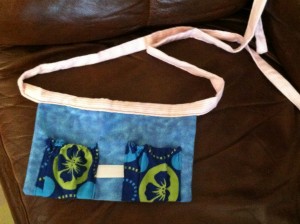For me, surgery was the first step of the cure. Having never had any major surgery it was a scary prospect. The first mastectomy I had was a modified radical. This meant that the surgeon would be taking lymph nodes. He planned to take 4 or 5 nodes but once he was in there he felt he needed to take more, it turned out to be 24 in all. The nodes were enlarged and he was worried that they were cancerous. Having dimpling of the skin, a tumor that looked to be about 2 cm and was less than a millimeter from the chest wall gave him reason to believe the cancer could have metastasized into the lymph nodes. Fortunately for me, all 24 nodes were clear. But this made for a slow and sometimes painful recovery. It’s been almost two years since the first surgery and I’m still healing.
The second mastectomy was almost a year to the day from the first, it was a Simple Mastectomy. This time the surgeon only took one lymph node, which was clear of cancer. The complication with the second surgery, I believe, happened when I was coming off the anesthesia. When I woke up the nurse was saying she was trying to get my blood pressure down, all I can remember is that one of the numbers was over 200. Later that day I started to swell up in the shoulder near the incision. The nurse that night kept putting ice on it saying we needed to get the swelling down. I told her it wasn’t helping, I was blowing up like a balloon. One of my drains had stopped flowing several hours earlier which I later realized was a tell-tale sign. The next morning the surgeon came in asking if I was ready to go home. I said I am, but I wasn’t sure he would be when he looked at my shoulder. As soon as he heard what was happening he called the nurses in and they unwrapped me as fast as they could, took my breakfast away and I was told I would be going back in for surgery as soon as they could find a slot. It turned out to be a hematoma, a very large one. The surgeon went in, cleaned up the bleeding and I was sent me home the next day.
The second mastectomy healed much faster, I had lymph nodes to process the excess fluid which made a big difference. I still have a pouch of fluid from the first mastectomy and lymphedema in my arm. I’m still working to reduce the fluid but it may be a battle I fight for a long time, maybe even a lifetime. I do feel surgery was necessary in my case. I’m not sure how long it would have taken for my cancer to spread but I feel confident that it would have, especially given that I had new cancer appear the second year. Surgery is not something to take lightly but until scientists come up with a real cure I see it as viable solution.
